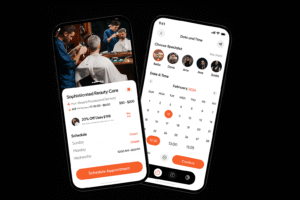Learn how to use JavaScript for interactive web pages in 2025 with practical tips, examples, and best practices to engage users and enhance UX.
Introduction: Why Use JavaScript for Interactive Web Pages?
In modern website development, using JavaScript for interactive web pages is essential to create engaging, dynamic experiences that keep visitors hooked. JavaScript allows developers to add animations, respond to user inputs, and update content in real time without refreshing the page.
This guide covers everything you need to know about using JavaScript for interactive web pages in 2025, including basics, key techniques, and practical examples.
What Is JavaScript and Why Is It Important for Web Interactivity?
JavaScript is a versatile programming language that runs in the browser, enabling websites to respond instantly to user actions. Unlike static HTML and CSS, JavaScript makes websites come alive by adding features such as:
Animated effects
Form validation
Dynamic content loading
Interactive maps and games
Real-time updates
How to Use JavaScript for Interactive Web Pages: Step-by-Step
1. Include JavaScript in Your Website
You can add JavaScript either:
Inline inside <script> tags in your HTML file
Link an external .js file for better organization
2. Manipulate the DOM (Document Object Model)
The DOM represents your webpage elements. Using JavaScript, you can:
Change text or styles dynamically
Add or remove elements
React to events like clicks or keypresses
3. Use Event Listeners
Event listeners respond to user actions such as:
Mouse clicks
Keyboard inputs
Scrolling
Hovering
4. Validate Forms with JavaScript
Validate user input before submission to improve data quality.
5. Create Animations and Effects
JavaScript enables smooth animations like fading, sliding, and toggling visibility.
Best JavaScript Libraries and Frameworks for Interactivity
jQuery: Simplifies DOM manipulation and event handling.
React: Builds fast, reactive user interfaces.
Vue.js: Lightweight framework for interactive UI.
GSAP: For advanced animations.
Anime.js: Easy-to-use animation library.
Tips to Optimize JavaScript for Interactive Web Pages
Minimize and compress JavaScript files for faster loading.
Defer loading non-essential scripts to improve performance.
Avoid blocking the main thread with heavy computations.
Test JavaScript compatibility across browsers and devices.
Use modern ES6+ syntax for cleaner, efficient code.
FAQ — Using JavaScript for Interactive Web Pages
Q1: Is JavaScript necessary for modern websites?
A: Yes, it’s essential for creating dynamic and interactive user experiences.
Q2: Can JavaScript slow down my website?
A: Poorly optimized JavaScript can affect performance; use best practices to minimize impact.
Q3: Is JavaScript hard to learn for beginners?
A: With practice and resources, beginners can learn basic JavaScript easily.
Q4: Should I use frameworks or vanilla JavaScript?
A: For small projects, vanilla JavaScript is fine; for complex UIs, frameworks help.
Q5: How do I debug JavaScript errors?
A: Use browser developer tools like Chrome DevTools to find and fix errors.
Conclusion
Learning how to use JavaScript for interactive web pages is vital for modern web developers aiming to create engaging, responsive sites. By mastering JavaScript basics, event handling, DOM manipulation, and using popular libraries, you can significantly enhance user experience in 2025.
Start experimenting with JavaScript today and make your website truly interactive!














